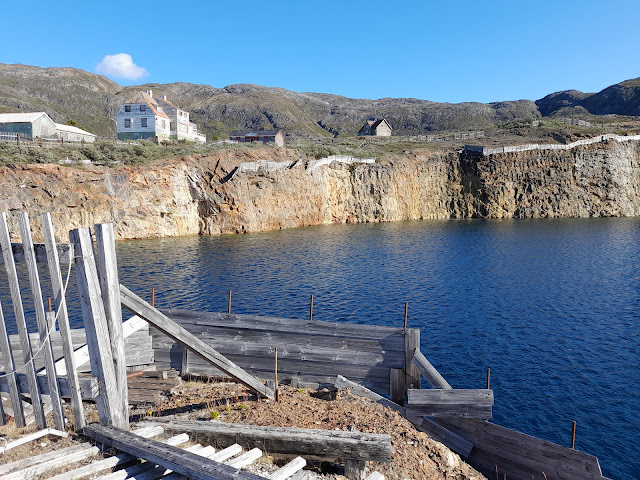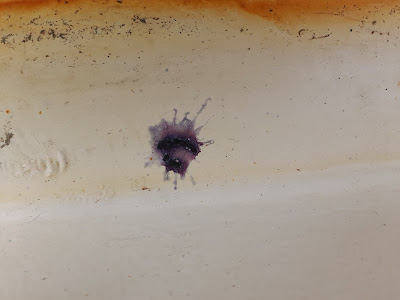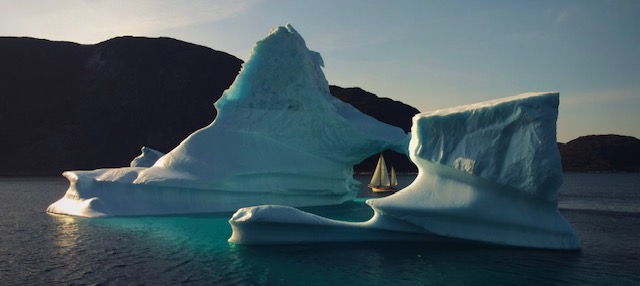2000' mountain
We saw fog nearly every day. At night it would roll in from Davis Strait over the islands, then part way up up the fjords. By noon the sun might break it up, pushing the fog from the fjords back to the islands and out to sea. Often, to avoid inland travel in the fog, we'd wait for signs of it clearing before pushing off.
The cryolite mine at Ivigtut. During WW2, cryolite was the way to obtain aluminium, so essential for the construction of aircraft, and this was the only major mine in the world. The US sent here 500 men to protect the mine.
Lots of rubble at the mine. The white is (maybe) the cryolite. The coppery crystal is chalcopyrite. I'm no geologist & might be mistaken.
A little piece of Paradise
Muskox abound in the area. We saw perhaps 100.
Bird splat. Blueberry season
We saw fog nearly every day. At night it would roll in from Davis Strait over the islands, then part way up up the fjords. By noon the sun might break it up, pushing the fog from the fjords back to the islands and out to sea. Often, to avoid inland travel in the fog, we'd wait for signs of it clearing before pushing off.
The cryolite mine at Ivigtut. During WW2, cryolite was the way to obtain aluminium, so essential for the construction of aircraft, and this was the only major mine in the world. The US sent here 500 men to protect the mine.
The mine.
Denmark worked the mine long before the war, and maintains a presence at the naval base Gronnedal 3 miles distant. Some Danish buildings, cemeteries, memorials near the mine.
Denmark worked the mine long before the war, and maintains a presence at the naval base Gronnedal 3 miles distant. Some Danish buildings, cemeteries, memorials near the mine.
Shipwreck, lost at sea.
A little piece of Paradise
Happy days long gone by
Danish cemeteries.
Muskox abound in the area. We saw perhaps 100.
Muskox. Like a cow's when it doesn't drink much water.
Caribou. Like deer, but bigger, and a bit flattened.














.jpg)




Comments
Post a Comment